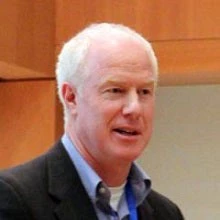The frequency and sophistication with which case studies are deployed by social scientists has greatly expanded in recent years. The goal now is not merely to document or describe, but to diagnose, explain, interpret, and inform a basis for action. Professional schools across the disciplines – from medicine and engineering to business and public policy – now routinely use ‘the case method’ not only to teach but to generate practical knowledge.
 World Bank staff have been active contributors to and beneficiaries of these trends, especially as the role of institutions and governance has gained prominence in efforts to enhance development effectiveness. When complex places, processes, people and projects come together, they inherently yield a diverse range of outcomes. Mapping this variation with survey data and then explaining
how it varies using targeted case studies can yield uniquely instructive insights for development policy and practice.
World Bank staff have been active contributors to and beneficiaries of these trends, especially as the role of institutions and governance has gained prominence in efforts to enhance development effectiveness. When complex places, processes, people and projects come together, they inherently yield a diverse range of outcomes. Mapping this variation with survey data and then explaining
how it varies using targeted case studies can yield uniquely instructive insights for development policy and practice.
This twin approach forms the empirical foundations of a forthcoming report on public service delivery in the Middle East and North Africa region, and will be a central component of the new Global Delivery Initiative (which will focus on explaining and improving the quality of implementation systems).
Rather than seeking universal ‘best practice’ responses as a basis for policy advice, analysts use case studies to learn from ‘natural’ (or sometime overtly experimental) sources of intra-country variation. Everyone can agree in the abstract that context and high quality institutions matter for development, and that one size doesn’t fit all, but these truisms aren’t much help when trying to provide specific advice in response to a specific problem in a specific place, such as stemming urban violence in Rio de Janeiro or promoting more effective antenatal services for women in Cairo. Case studies are emerging as a useful strategy for eliciting not just uplifting success stories, but as unique data collection tools that can guide policy and practice by helping domestic actors adjust in real time as they seek solutions to emerging problems.
The recently completed ‘Institutions Taking Root’ (ITR) study is an exemplary instance of this new approach to discerning what works, and how success happens, in development. In places that initially seemed unlikely venues for successful development, the ITR team began from the premise that someone, somewhere, somehow had probably figured out how to make real gains where others had not.
In contexts ranging from rural electrification in Lao PDR to basic and secondary education in The Gambia, researchers sought out islands of success in seas of seeming failure, defining success as positive outcomes which were measurable, legitimate and durable (i.e., robust despite exogenous shocks or changes in political leadership). An institution was considered to have achieved results if it exhibited sustained, measurable improvements in key agency outputs and outcomes, doing so across prevailing social cleavages (e.g., rural-urban, between ethnic groups, etc.).
Having identified such outcomes, researchers sought to test hypotheses examining the institution’s interaction with its context, and the organization’s inner workings. This procedure was followed in each of the case studies to guide and standardize data collection, thereby making systematic comparison of the cases possible. Interviews and focus groups were conducted both outside-in (focusing on external stakeholders and constituents first before moving onto officials) and bottom-up (beginning with frontline service providers before moving to agency management and political leaders) to ensure that typically less dominant viewpoints were represented.
One memorable example from the ITR describes the ministry of public works in Lao. Most such ministries, especially in poor countries, have strong imperatives to focus on building new roads rather than maintaining existing ones: new roads look impressive, provide officials with elaborate opening ceremonies and flattering media coverage, and most have an immediately large economic impact.
Fixing old roads, by contrast, is boring, time-consuming and devoid of political pay-off, no matter how necessary. But in Lao, the minister of public works had managed to shape a broad public consensus on the moral, economic and political importance of keeping roads in good repair. Deploying a memorable slogan, he travelled the country reminding villagers and elites alike that “Making children is easy and fun; raising children is hard and costly!” In this way, he argued, roads were like people: they should be cared for if they are to make a lasting contribution to Lao society. No matter their level of education, everyone in Lao understood the minister’s analogy; his unique but explicit leadership on this issue enabled him to secure political credit for an important issue that is usually overlooked.
Is this then “the answer” for raising the profile of road maintenance in developing countries everywhere? Readers will doubtless have their own views, but I think it is an answer, demonstrating how a particular team of people found a way to solve a tough but widespread problem. As such, it can hopefully be a source of inspiration and ideas for others elsewhere seeking to find their own solutions.
( Read more posts about this report here)
 World Bank staff have been active contributors to and beneficiaries of these trends, especially as the role of institutions and governance has gained prominence in efforts to enhance development effectiveness. When complex places, processes, people and projects come together, they inherently yield a diverse range of outcomes. Mapping this variation with survey data and then explaining
how it varies using targeted case studies can yield uniquely instructive insights for development policy and practice.
World Bank staff have been active contributors to and beneficiaries of these trends, especially as the role of institutions and governance has gained prominence in efforts to enhance development effectiveness. When complex places, processes, people and projects come together, they inherently yield a diverse range of outcomes. Mapping this variation with survey data and then explaining
how it varies using targeted case studies can yield uniquely instructive insights for development policy and practice.
This twin approach forms the empirical foundations of a forthcoming report on public service delivery in the Middle East and North Africa region, and will be a central component of the new Global Delivery Initiative (which will focus on explaining and improving the quality of implementation systems).
Rather than seeking universal ‘best practice’ responses as a basis for policy advice, analysts use case studies to learn from ‘natural’ (or sometime overtly experimental) sources of intra-country variation. Everyone can agree in the abstract that context and high quality institutions matter for development, and that one size doesn’t fit all, but these truisms aren’t much help when trying to provide specific advice in response to a specific problem in a specific place, such as stemming urban violence in Rio de Janeiro or promoting more effective antenatal services for women in Cairo. Case studies are emerging as a useful strategy for eliciting not just uplifting success stories, but as unique data collection tools that can guide policy and practice by helping domestic actors adjust in real time as they seek solutions to emerging problems.
The recently completed ‘Institutions Taking Root’ (ITR) study is an exemplary instance of this new approach to discerning what works, and how success happens, in development. In places that initially seemed unlikely venues for successful development, the ITR team began from the premise that someone, somewhere, somehow had probably figured out how to make real gains where others had not.
In contexts ranging from rural electrification in Lao PDR to basic and secondary education in The Gambia, researchers sought out islands of success in seas of seeming failure, defining success as positive outcomes which were measurable, legitimate and durable (i.e., robust despite exogenous shocks or changes in political leadership). An institution was considered to have achieved results if it exhibited sustained, measurable improvements in key agency outputs and outcomes, doing so across prevailing social cleavages (e.g., rural-urban, between ethnic groups, etc.).
Having identified such outcomes, researchers sought to test hypotheses examining the institution’s interaction with its context, and the organization’s inner workings. This procedure was followed in each of the case studies to guide and standardize data collection, thereby making systematic comparison of the cases possible. Interviews and focus groups were conducted both outside-in (focusing on external stakeholders and constituents first before moving onto officials) and bottom-up (beginning with frontline service providers before moving to agency management and political leaders) to ensure that typically less dominant viewpoints were represented.
One memorable example from the ITR describes the ministry of public works in Lao. Most such ministries, especially in poor countries, have strong imperatives to focus on building new roads rather than maintaining existing ones: new roads look impressive, provide officials with elaborate opening ceremonies and flattering media coverage, and most have an immediately large economic impact.
Fixing old roads, by contrast, is boring, time-consuming and devoid of political pay-off, no matter how necessary. But in Lao, the minister of public works had managed to shape a broad public consensus on the moral, economic and political importance of keeping roads in good repair. Deploying a memorable slogan, he travelled the country reminding villagers and elites alike that “Making children is easy and fun; raising children is hard and costly!” In this way, he argued, roads were like people: they should be cared for if they are to make a lasting contribution to Lao society. No matter their level of education, everyone in Lao understood the minister’s analogy; his unique but explicit leadership on this issue enabled him to secure political credit for an important issue that is usually overlooked.
Is this then “the answer” for raising the profile of road maintenance in developing countries everywhere? Readers will doubtless have their own views, but I think it is an answer, demonstrating how a particular team of people found a way to solve a tough but widespread problem. As such, it can hopefully be a source of inspiration and ideas for others elsewhere seeking to find their own solutions.
( Read more posts about this report here)


Join the Conversation